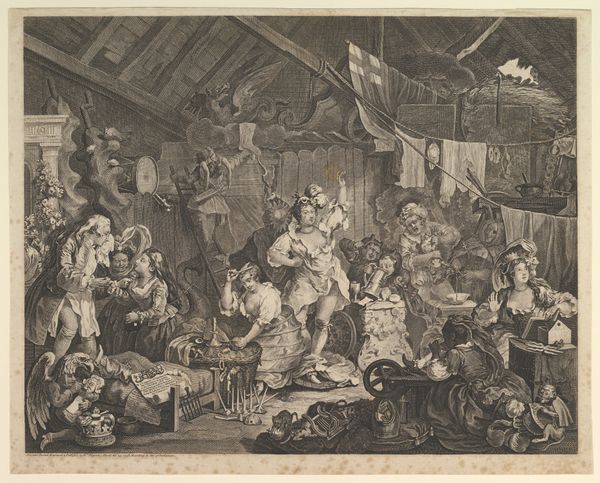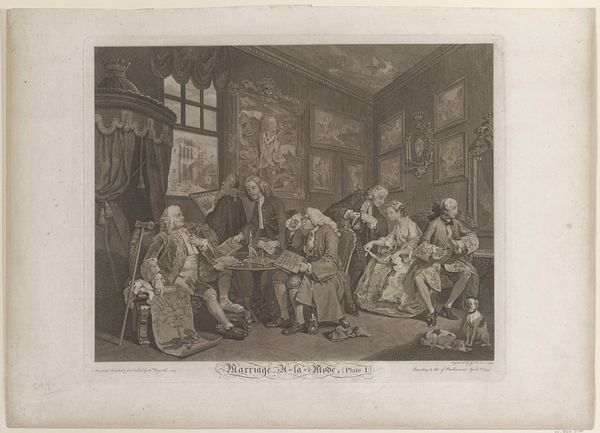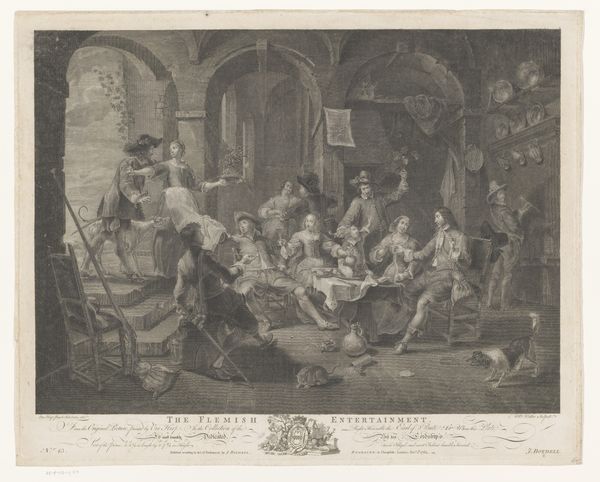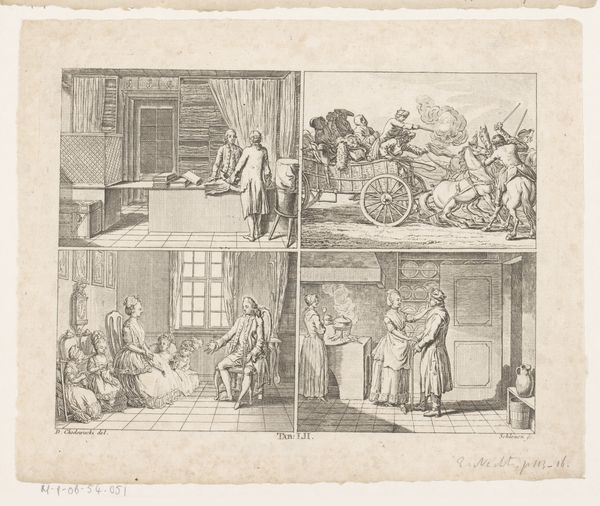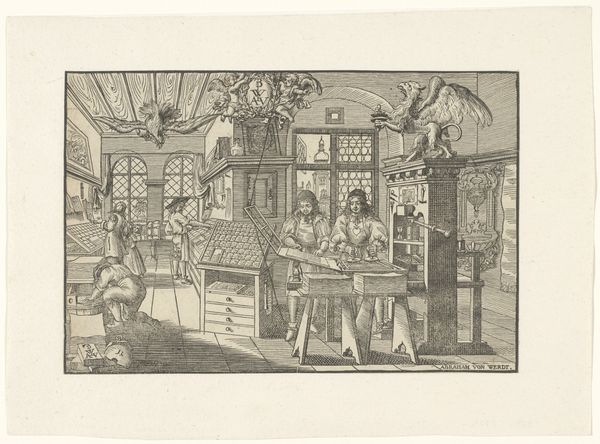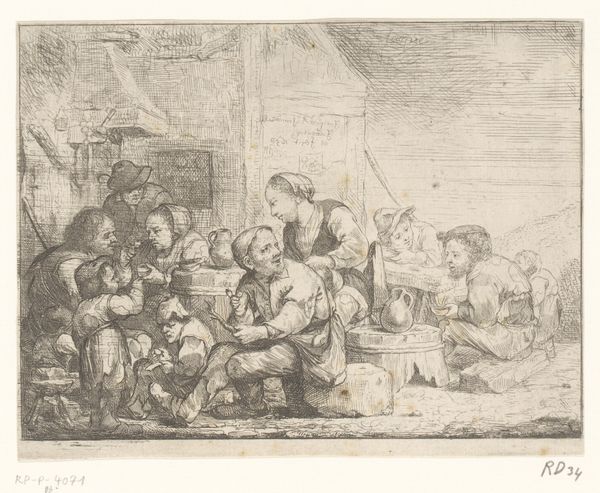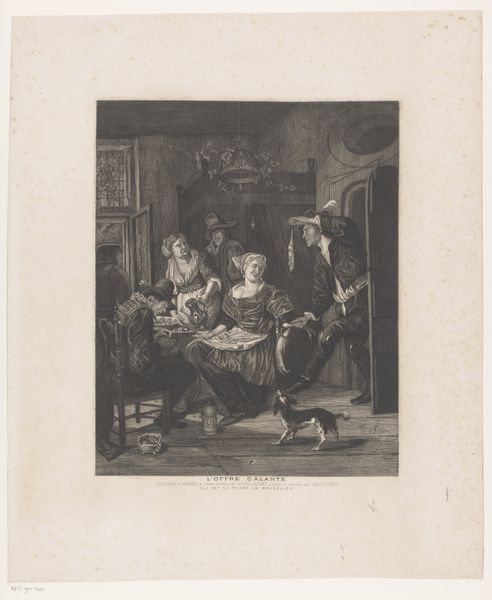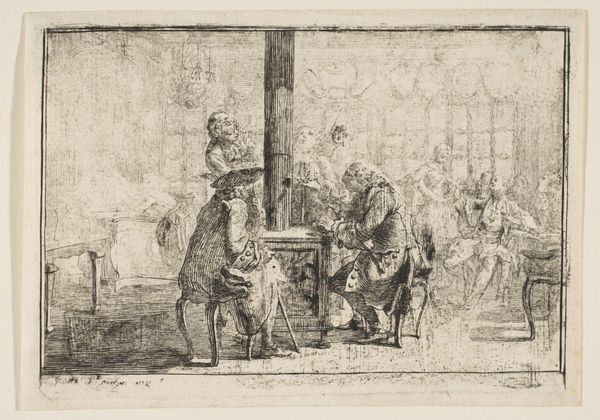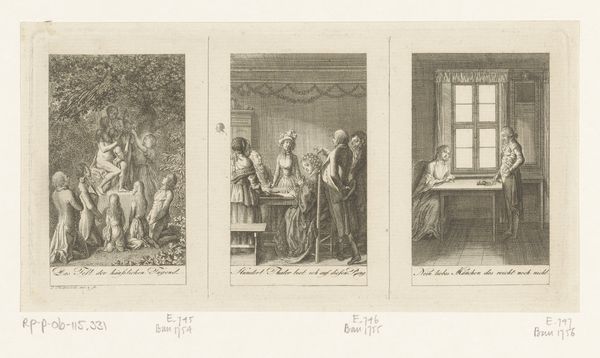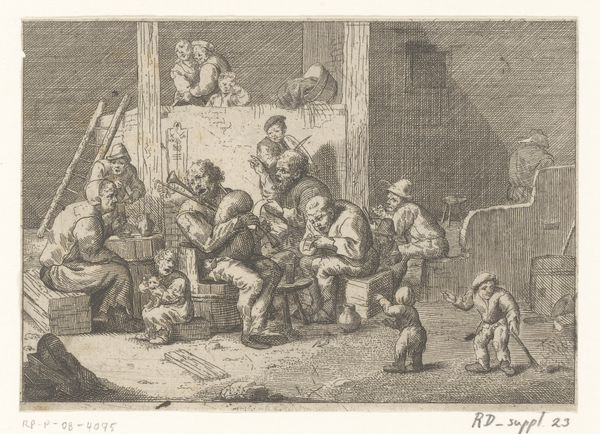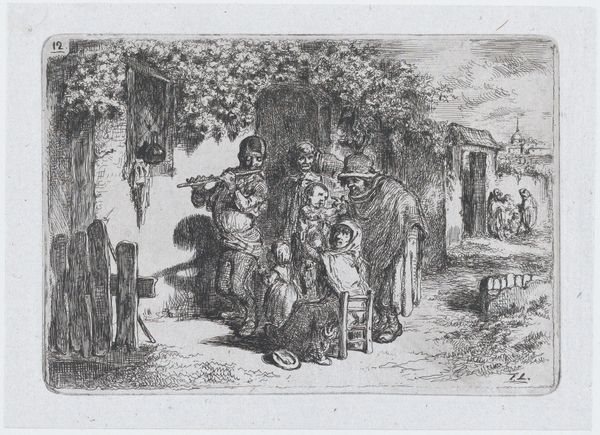
Blad med tre fremstillinger: "Det moderne Givtermaal" efter Hogarth, Portræt af Frants Napoleon og "Hinduernes ypperste præst" 1806 - 1846
0:00
0:00
print, engraving
#
portrait
# print
#
genre-painting
#
history-painting
#
engraving
Dimensions: 195 mm (height) x 304 mm (width) (plademaal)
Curator: Let’s explore this complex print by Andreas Lillienberg. It's titled "Blad med tre fremstillinger...", translating to "Sheet with three depictions." It's dated sometime between 1806 and 1846, a copper engraving. What grabs you about it at first glance? Editor: Chaos! A meticulously rendered chaos. My eye doesn't know where to land first. So many stories crammed onto one surface...It feels a bit like flipping through channels on an old television, all these worlds vying for attention. Curator: Right. It is split into three scenes. The largest depicts “Det moderne Givtermaal” after Hogarth – a modern marriage. We also have a portrait of Frants Napoleon and a depiction of “Hinduernes ypperste præst”—the highest Hindu priest. Considering printmaking in this period, think of the labour involved in the detailed work in replicating all these scenes. Editor: Oh, absolutely. You can practically feel the hand of the engraver. It’s all in the tiny, deliberate marks – the almost obsessive detail in rendering the fabrics, the faces...it becomes almost a performance of skill. The contrast between the delicate line work and the satirical subject matter in the Hogarth scene is really delicious, somehow. The whole image gives me an anxious feeling. It makes me feel like an unwelcome intruder in a drama. Curator: The “modern marriage” section clearly engages with societal satire through its figures’ arrangements. Note how the leisure class is represented, with attention focused on the space around these individuals and implications about consumerism in contrast to manual production. This speaks to the rising tensions in society around social mobility, power, and money in the nineteenth century. Editor: I am very distracted by that guy with the enormous fan who appears to be fanning a figure who is almost comical, so out of place, exoticized, dehumanized, and cartoonish at the same time... Curator: You're drawn to the exotic subject matter represented with ethnographic inaccuracy in this era. Consider the colonial gaze imbuing such caricatures, which circulated easily due to printmaking technologies, further entrenching misconceptions and promoting ideas about ethnic groups as other and somehow not modern. Editor: This engraving is so interesting because while at first, it seemed aesthetically chaotic and visually busy, when one engages closely, it slowly gives up the material of another age through craft and production, and an uncomfortable tension is found lurking in those representations. Thanks for drawing my attention to it! Curator: My pleasure! A close examination of material production practices, combined with critical questioning, reveals insights into social dynamics and power relations of that period.
Comments
No comments
Be the first to comment and join the conversation on the ultimate creative platform.
